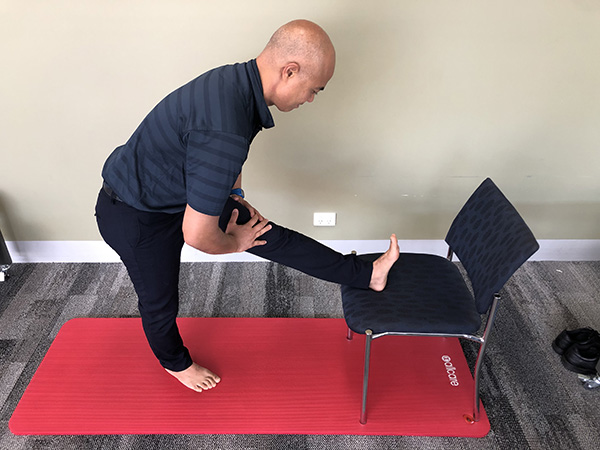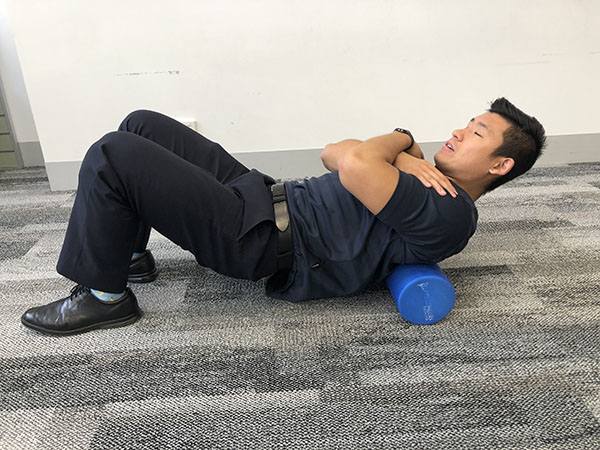Off-Season Cricket Training for Fast Bowlers: Prevent Stress Fractures & Improve Performance
The cricket season has just ended, making this the perfect time for fast bowlers to re-evaluate their training approach. The off-season is a crucial period for cricketers, particularly fast bowlers, to focus on recovery, injury prevention, and overall performance enhancement. One of the most significant injury concerns for fast bowlers is stress fractures in the lumbar spine, caused by repetitive hyperextension and rotation during bowling. This article on off-season cricket training for fast bowlers, provides an ideal opportunity to address risk factors, build resilience, and refine biomechanics to prevent injuries during the competitive season.
Please note: While this article focusses on off-season cricket training for fast bowlers, the same considerations can be applied to all bowlers.
Key Factors Contributing to Stress Fractures
>Understanding the primary causes of stress fractures in fast bowlers allows for targeted intervention during the off-season.
1. Bowling Technique and Biomechanics
- The fast bowling action places immense stress on the lumbar spine, particularly in the pars interarticularis region of the vertebrae.
- Bowlers using the “mixed action”—excessive counter-rotation of the hips and shoulders—are at a higher risk.
- The off-season is an ideal time to assess and refine bowling techniques to promote a more efficient and safe action.
2. Bowling Workload Management
- Studies indicate that bowling more than 234 deliveries in a 7-day period significantly increases injury risk, while staying below 197 deliveries is safer.
- Gradual workload progression during the off-season ensures bowlers build endurance without overloading the spine.
- Utilizing tools like the Rating of Perceived Exertion (RPE) scale can help monitor training intensity and workload management.
3. Age and Developmental Considerations
- Adolescent bowlers are particularly vulnerable due to their developing skeletal structures.
- Off-season strength and conditioning programs should be tailored to support growth and minimize stress on the lumbar spine.
4. Physical Conditioning and Core Strength
- A weak or imbalanced core leads to poor force distribution, increasing spinal stress.
- The off-season provides an excellent opportunity to enhance core strength, stability, and overall body biomechanics.
Off-Season Cricket Training for Fast Bowlers Strategies
A well-structured off-season training program can help fast bowlers reduce the risk of stress fractures while improving overall performance. Incorporating the following components into training can be highly beneficial:
1. Workload Management and Loading Recommendations
- Gradual Increase in Bowling Load: Slowly increasing the number of overs bowled per session prevents excessive stress on the spine.
- Bowling Guidelines: According to the Australian Cricket Junior Bowling Guidelines, younger bowlers should adhere to recommended bowling limits to prevent overuse injuries. (CA Junior Bowling Guidelines)
- Monitoring Workload: Tools such as GPS tracking and workload diaries can help ensure that training remains within safe limits.
2. Mobility and Flexibility Training
Maintaining spinal flexibility can reduce undue stress on the lower back. Some beneficial mobility and flexibility exercises include:
- Corkscrew Stretch: Lie on your back with arms outstretched, legs raised to 90 degrees. Slowly rotate your legs to one side, keeping shoulders on the ground, hold for 30 seconds then return to the centre and switch sides.
- Standing Hamstring Stretch: Stand with one foot elevated on a low surface. Keep your back straight and hinge forward at the hips to feel a stretch in the hamstring. Hold for 30 seconds on each leg.

- Kneeling Hip Flexor Stretch: Kneel on one knee, keeping the other foot flat in front with the knee at 90 degrees. Push hips forward slightly to stretch the hip flexor. Hold for 30 seconds on each side.

- Thoracic Mobility Drills: These drills enhance overall spinal rotation and reduce compensatory stress on the lumbar spine.

Related articles…”5 Core exercises for Cricketers – Stay Injury Free This Season!“
Off-Season Cricket Training for Fast Bowlers Prevention Strategies
Stress fractures are a common overuse injury among cricketers, particularly fast bowlers, due to the repetitive and high-impact nature of the bowling action. To minimize the likelihood of such injuries, players, coaches, and support staff can adopt a range of targeted prevention strategies. These strategies focus on managing workload, enhancing mobility, and improving strength and stability.
Loading Recommendations
- Gradual Increase in Bowling Load:
A gradual and systematic increase in bowling workload is essential to allow the body—especially the bones, muscles, and connective tissues—to adapt progressively to the physical demands of cricket. A sudden spike in bowling volume or intensity can lead to overuse injuries, including stress fractures. Therefore, it is important to follow structured training plans that incrementally raise workload over time. This includes careful monitoring of the number of deliveries bowled during training and competition, as well as ensuring that adequate rest and recovery periods are built into the schedule to prevent cumulative fatigue. - Workload Monitoring Tools:
Employing workload monitoring tools, such as the Rating of Perceived Exertion (RPE) scale, can provide valuable insights into how intensely a player is training. These tools help both athletes and coaching staff quantify subjective effort and compare it with objective measures such as ball count and duration of sessions. Using such data allows for better-informed decisions regarding training adjustments, ensuring that workloads stay within safe and sustainable limits and helping to prevent overload on the musculoskeletal system.
Mobility Exercises
- Spinal Mobility:
The lumbar spine is particularly susceptible to stress-related injuries in fast bowlers due to the significant rotational and extension forces experienced during the bowling action. Incorporating mobility exercises aimed at improving spinal flexibility can help bowlers maintain proper technique and reduce mechanical stress on the vertebrae. Exercises such as cat-cow stretches, thoracic rotations, and yoga-based movements can promote fluid spinal motion and contribute to injury prevention.
- Hip Flexor and Hamstring Stretching:
Tightness in the hip flexors and hamstrings can lead to poor posture and compensatory movements during bowling, which may place additional stress on the lower back. Regular stretching routines that target these muscle groups can help maintain proper alignment and reduce tension in the lumbar spine. Dynamic warm-up exercises before training and static stretches during cool-downs should both be incorporated to ensure optimal flexibility and muscular balance.
Stability and Strength Exercises
- Core Strengthening:
A strong and stable core plays a pivotal role in maintaining postural integrity and controlling movement during the bowling action. Core strengthening exercises such as planks, side bridges, bird-dogs, and dead bugs improve the body’s ability to stabilize the spine under load. These exercises can reduce excessive strain on the lower back by distributing forces more evenly throughout the trunk. A well-conditioned core not only enhances performance but also significantly reduces the risk of spinal injuries. For examples of effective core exercises for cricketers, refer to this guide. - Lower Limb Strengthening:
Strong and resilient lower limb muscles are essential for optimal biomechanics during running and bowling. Exercises targeting the quadriceps, hamstrings, glutes, and calf muscles can improve strength and coordination, allowing for smoother force transmission and reducing stress on the spine. Squats, lunges, step-ups, and calf raises should be regularly included in a cricketer’s training regimen to support effective movement mechanics and prevent compensatory loading patterns. - Plyometric Training:
Plyometric exercises, which involve explosive movements such as jump squats, box jumps, and bounding drills, are beneficial for developing power and neuromuscular coordination. These exercises enhance a player’s ability to absorb and redirect forces efficiently during dynamic actions like bowling. Improved muscular responsiveness and movement control can lead to more efficient technique and a lower risk of injury by reducing the impact forces that contribute to stress fractures.
Conclusion
Stress fractures represent a serious and prevalent issue in cricket, particularly among fast bowlers who are exposed to repeated high-impact forces during their bowling action. Addressing this problem requires a proactive and multifaceted approach to injury prevention. By implementing evidence-based strategies—such as progressive loading, targeted mobility routines, and comprehensive strength training—cricketers can significantly reduce their risk of developing stress fractures. Moreover, regular monitoring and individualized programming are key to ensuring these strategies are effective and sustainable. Ultimately, prioritizing injury prevention not only supports long-term athletic health but also helps players perform at their best, consistently and safely.
References:
Alway, P., Brooke-Wavell, K., Langley, B., et al. (2019) ‘Incidence and prevalence of lumbar stress fracture in English County Cricket fast bowlers, association with bowling workload and seasonal variation’, BMJ Open Sport & Exercise Medicine, 5(1), e000529. Available at: https://bmjopensem.bmj.com/content/5/1/e000529 (Accessed: 20 December 2024).
Cook, J., McDonald, W., & Purdam, C. (2015) ‘Mixed bowling action and lumbar stress fractures in elite cricketers’, British Journal of Sports Medicine, 49(6), pp. 389-393. Available at: https://doi.org/10.1136/bjsports-2014-094358 (Accessed: 20 December 2024).
Farhart, M., Orchard, J., & Kountouris, A. (2023) ‘Lumbar stress fractures in cricket: A review of the literature’, Journal of Science and Medicine in Sport, 26(1), pp. 35-44. Available at: https://doi.org/10.1016/j.jsams.2022.10.004 (Accessed: 20 December 2024).
Linthorne, N., Ball, K., & MacMahon, C. (2015) ‘Ground reaction forces during the fast bowling action in cricket’, Journal of Sports Sciences, 33(6), pp. 567-574. Available at: https://doi.org/10.1080/02640414.2014.944086 (Accessed: 20 December 2024).
Wilson, J. (2021) ‘Stress fractures in cricket awareness project’. Available at: https://www.stress-fracture
Cricket Australia. (2023). Australian Cricket Junior Bowling Guidelines.
Pace Doctor. (2023). Managing Fast Bowling Workloads for Accelerated Development: 10 Factors to Consider. Retrieved from




